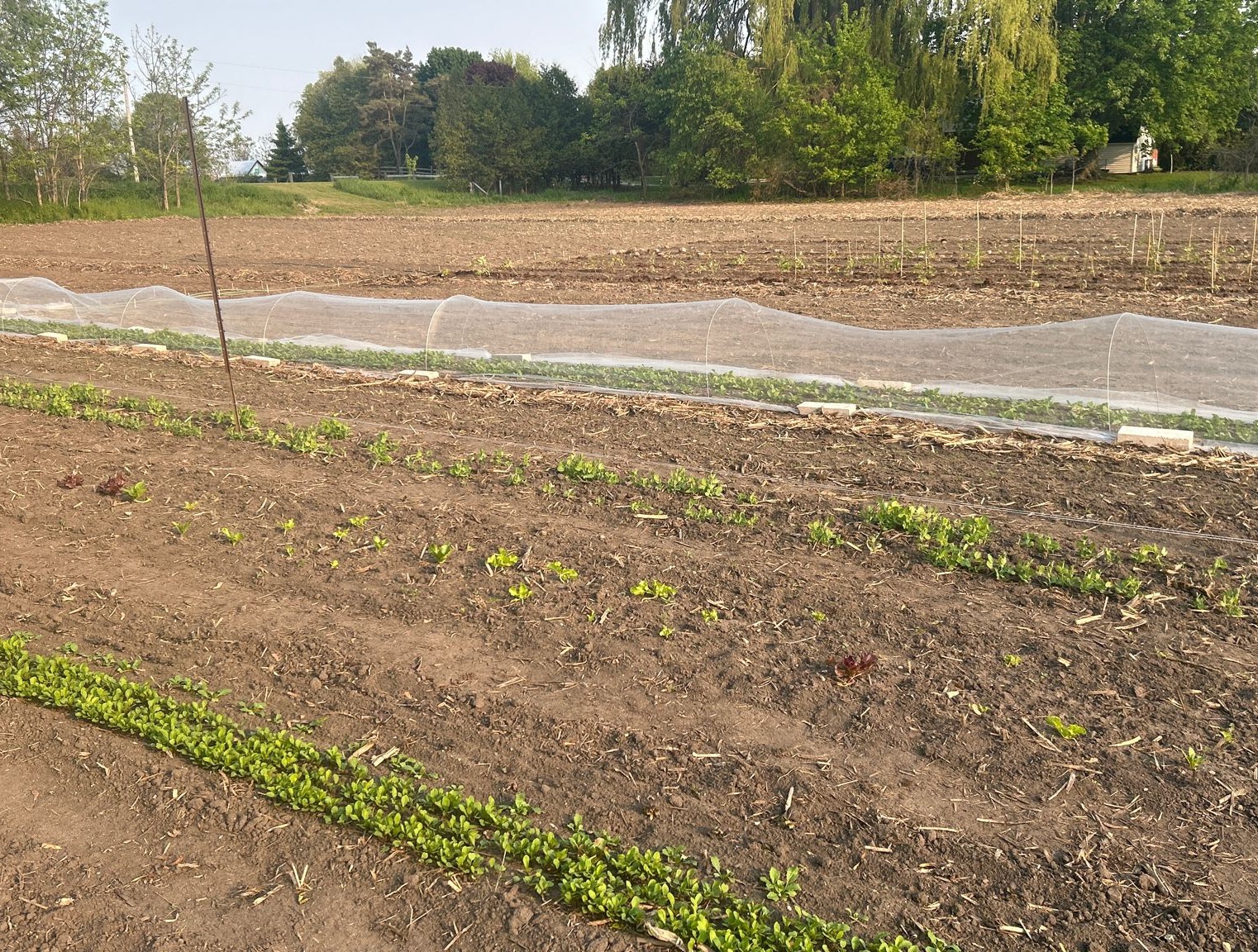2025 has been a year full of changes for my husband and I and our four kitties. We moved to a new home, took on renovations, and started a market garden (small-scale farm). Who doesn’t love a challenge?!
We moved in the dead of winter, which in Ontario, Canada presents unique obstacles. For example, some of our furniture had to live in the garage until the snow drifts melted down enough to carry it in the (wider) back door! As the wind howled and snow fell outside, we hunkered down inside working, planning, and dreaming of all the things we would grow in the garden come spring.
Starting a market garden the first year after moving is admittedly ambitious (or is that a nice way of putting it?) but after a lengthy property search we didn’t want to waste any time getting going. Ideally we would have had the fall to start preparing beds so everything would be more or less ready for planting come spring, but we worked with the time we had. In late February I sowed the first seeds indoors in our shop- onions and parsley to start. Starting seeds indoors in the winter is always exciting. It’s a reminder that sunshine, warmth, and greenery is coming back again. This time though it was extra meaningful as we were taking one of the first steps towards our goal of starting a market garden.
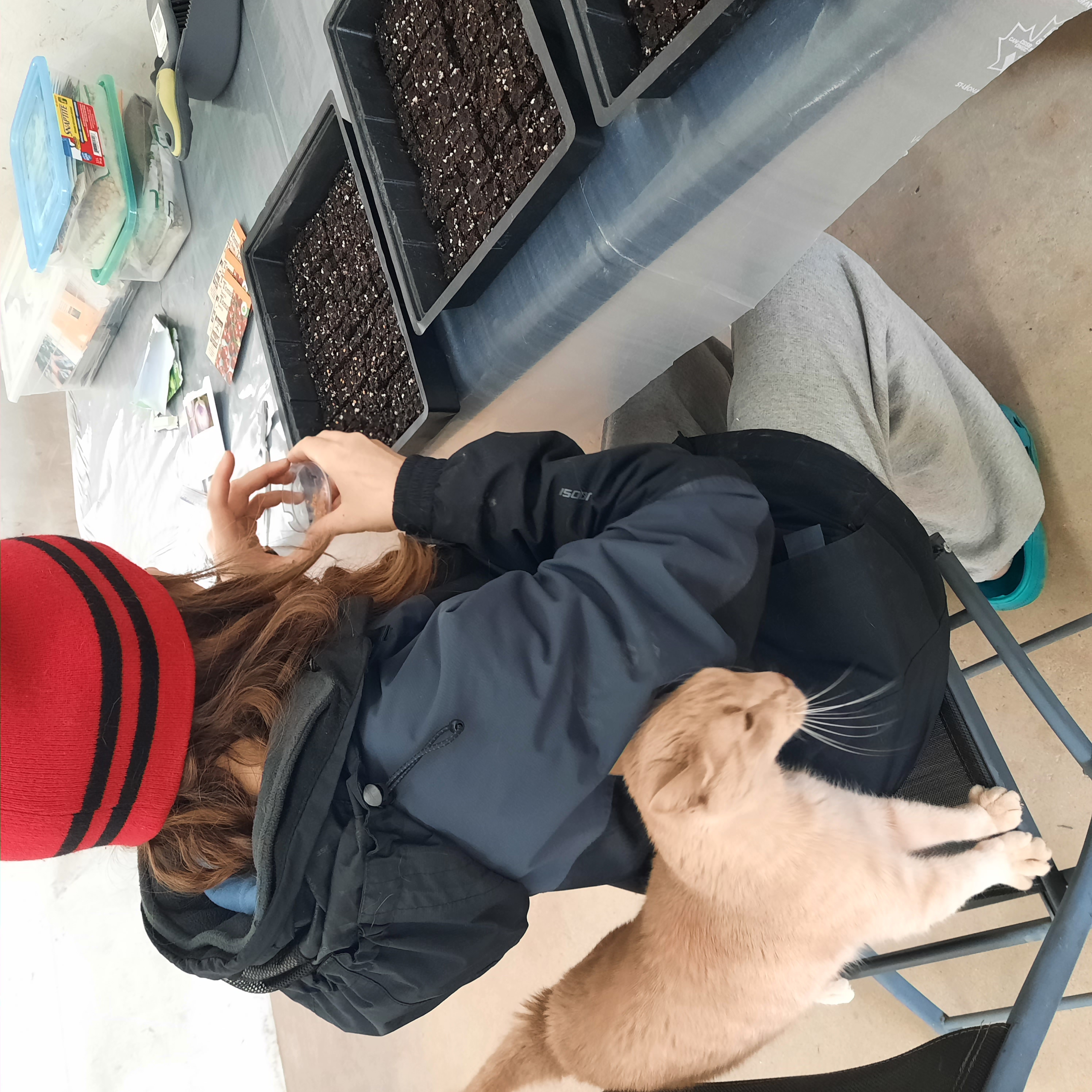
I tended the little seeds with extra care, trying to optimize the growing medium, heat, and light to ensure their success. While gardening as a job is a labor of love, it comes with a degree of expectation that is different from gardening as a hobby. The joys of gardening are exponentially increased- watching seedlings emerge, seeing plants growing healthily, enjoying beautiful sunny days with birds singing outside, and eating fresh produce that you grew yourself- but there are also fears that creep in. What if it’s a flop? What if we don’t sell much, or don’t have much to sell?
All I could do was push the worries aside and continue on. I started sowing the peppers, eggplant, tomatoes, and tomatillos indoors, but by this point I was starting to have some challenges with the seed starting operation. The earliest planted seedlings were becoming a bit sickly. I did have to change a few things in my seed starting process as part of ‘scaling up’, so I figured it was a matter of dialing in the heat, water, and nutrients. I tweaked and adjusted, and took solace that the younger seedlings were still looking OK.
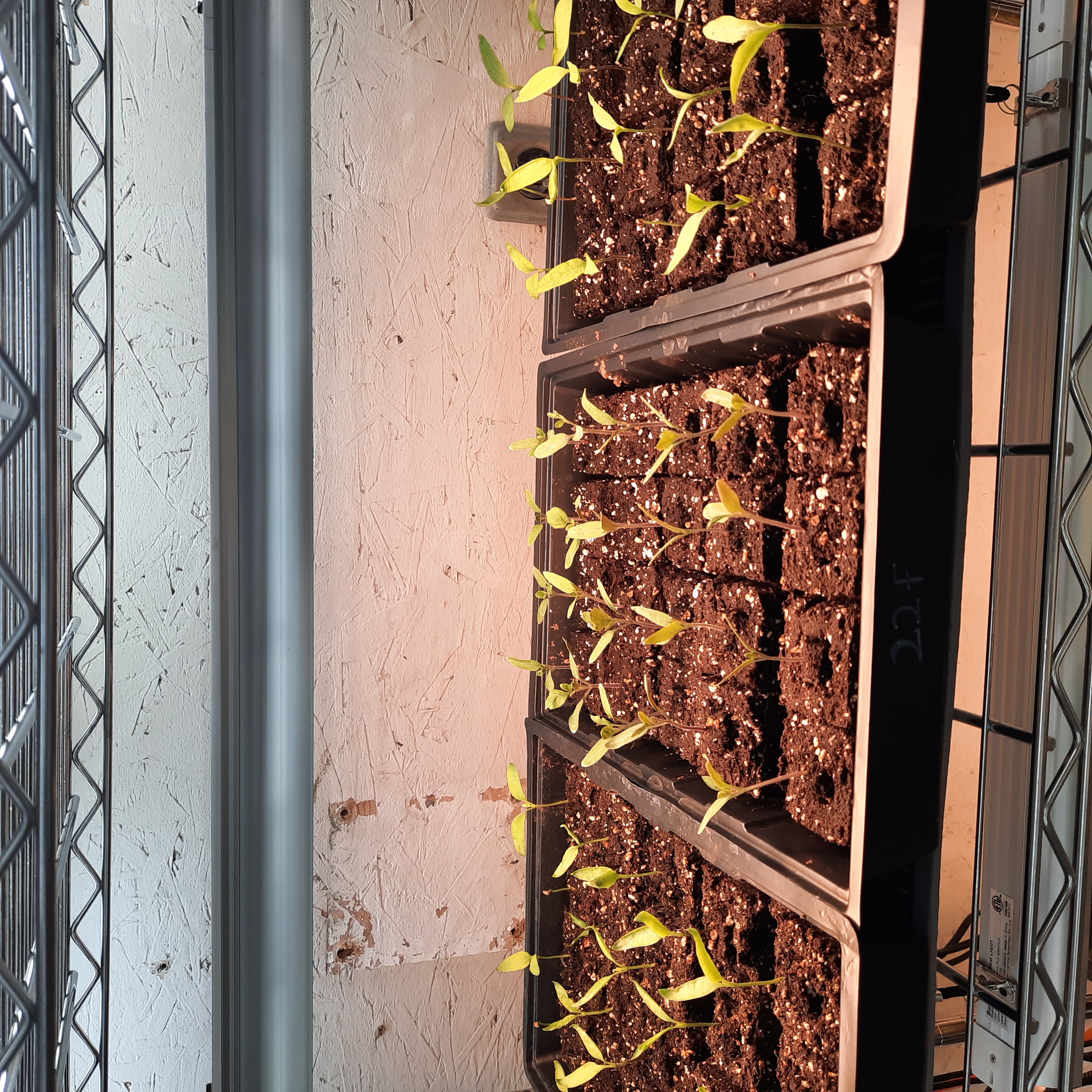
It was relatively late in spring by the time we were able to get into the field to start planting. Significant snowfall, combined with an unusually cold and wet spring, put us several weeks behind schedule. We didn’t have tarps or hoop houses in place to help the ground dry out and warm up faster, so we were bound to mother nature’s schedule. When we finally got into the field it felt like a huge milestone- getting to work the land as we had so eagerly anticipated. We sowed cool-season favorites like peas, carrots, spinach, lettuce, and arugula, ironically now hoping that the warm weather wouldn’t come too quickly and finish them off prematurely.
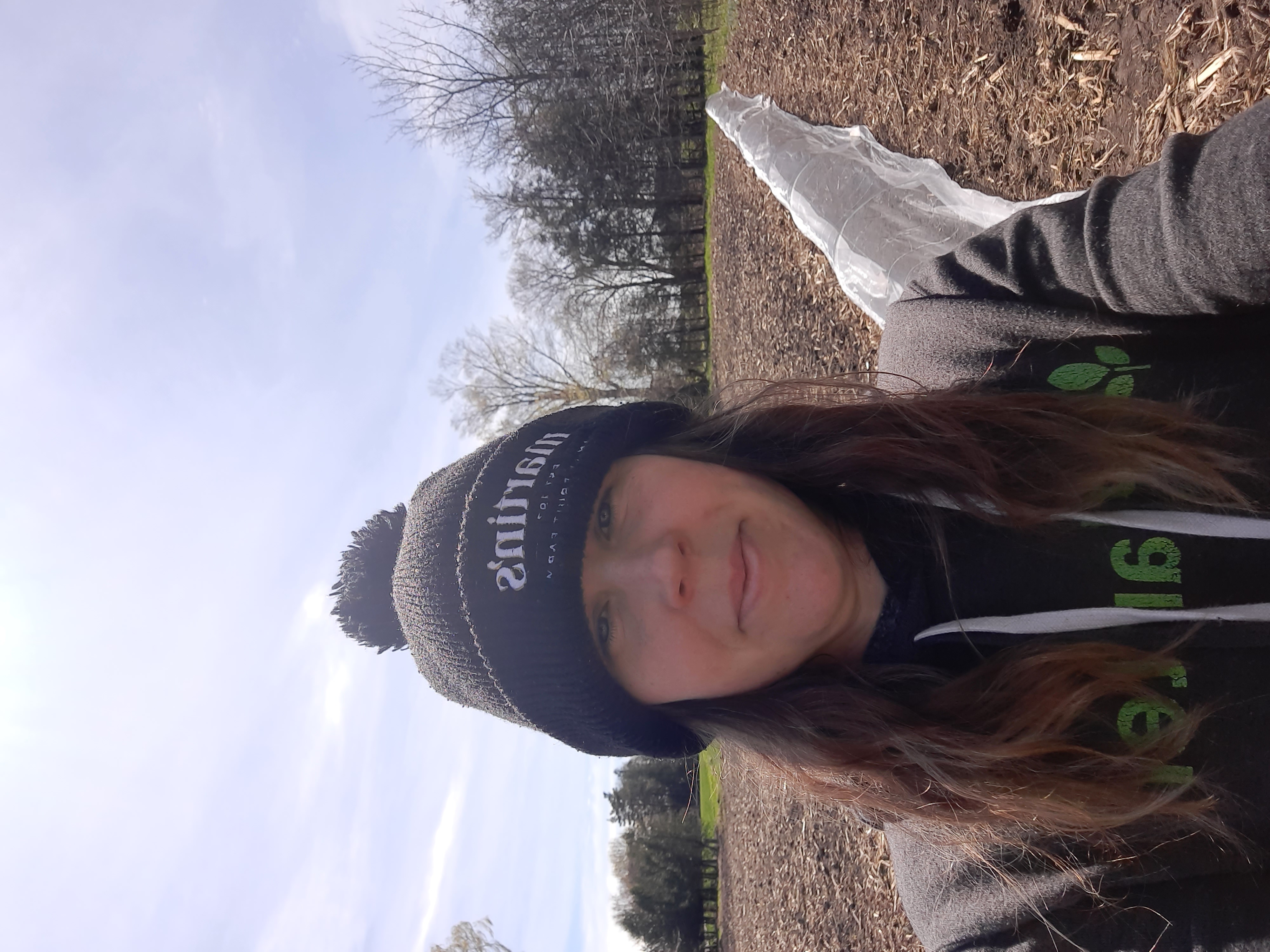
Not long after planting we did get an unusual spring heatwave- with daytime highs up to 75-85°F (25-30°C) and about a week with no rain. It was time to get watering, so I went to look for where to turn on the outside spigot. After following a maze of snaking pipes I found the valve that led outdoors, but I also noticed a larger pipe heading out in the general direction of the shop- and saw that that pipe was connected to the water softener outflow. For anyone unfamiliar, most residential water softeners work by adding salt to the water to bind other minerals. I’d been giving my seedlings salt water! It never crossed my mind that the shop water- over 100’ away from the house and with no appliances- would have any reason to be softened. While I was dismayed to learn I’d been slowly salting my seedlings, it felt like an absolute stroke of luck to have caught it at this point. While there were losses in the earlier seeded crops (RIP onions), the crops seeded later recovered with TLC and turned into healthy transplants.
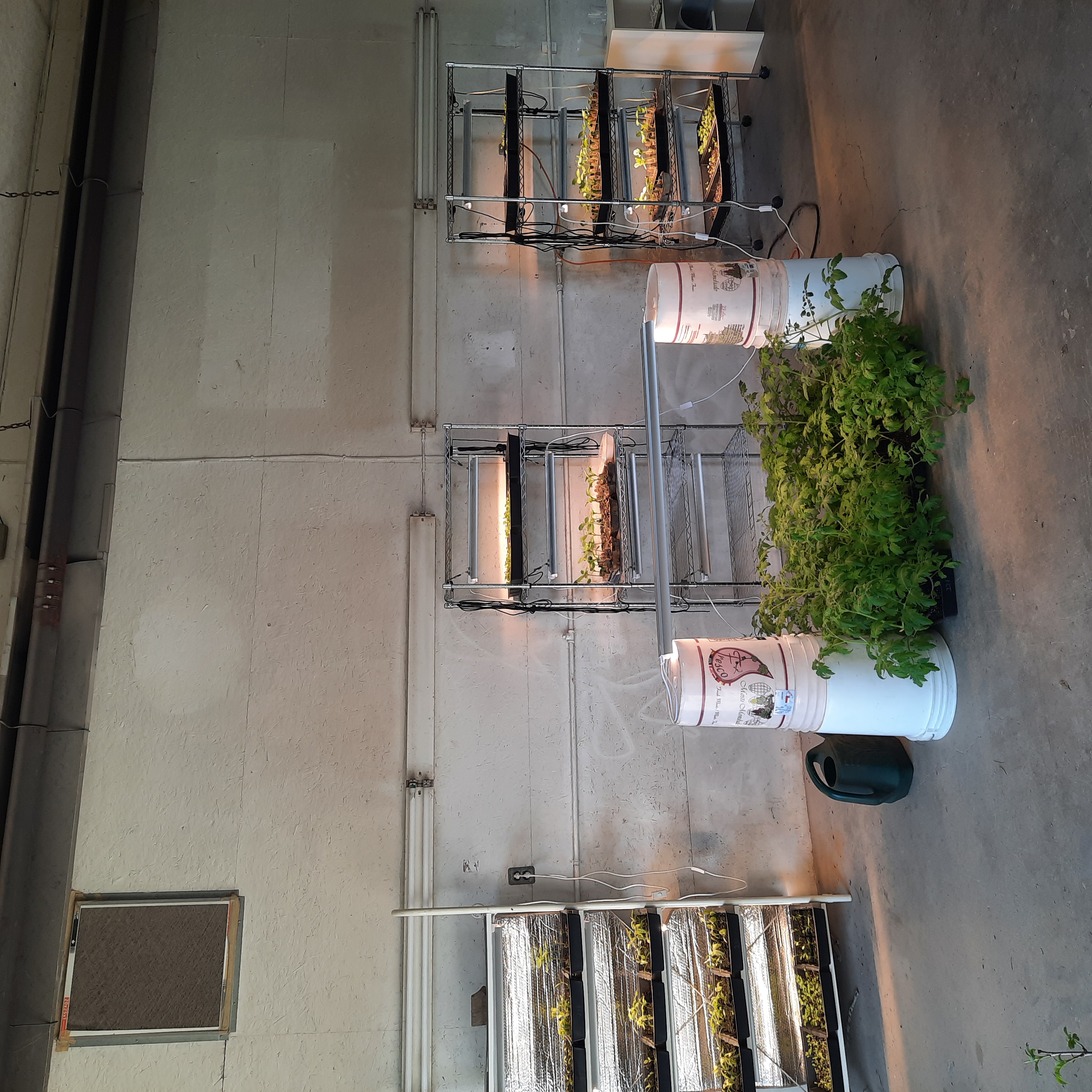
Around this time the garden outside was starting to take off as the cooler spring temps continued on, save the one hot week. During the mini heatwave, I’d fretted and fussed over the peas, the spinach, and especially the carrots. I was still getting familiar with the sandy loam soil and how often it needed watering, especially with a drying wind coming off the lake nearby. After that we had nearly a week of glorious, continuous, gentle rain which, although it put a damper on planting, provided relief from watering. The watering efforts were not in vain though as the carrots finally germinated (hooray!), the spinach poked through, and the peas tripled in size.
We’ve finally reached a point in the season where it feels like the garden is coming together. More and more of the field has been turned into usable growing space, the previously planted crops are starting to flourish, and the overall picture is becoming less of a blurry vision and more of a reality. There will certainly be more challenges to come- I’m not-so-eagerly waiting to see what kind of pest and disease pressure we have- but no matter what happens we’ll just keep planting, just keep watering, and just keep weeding!
